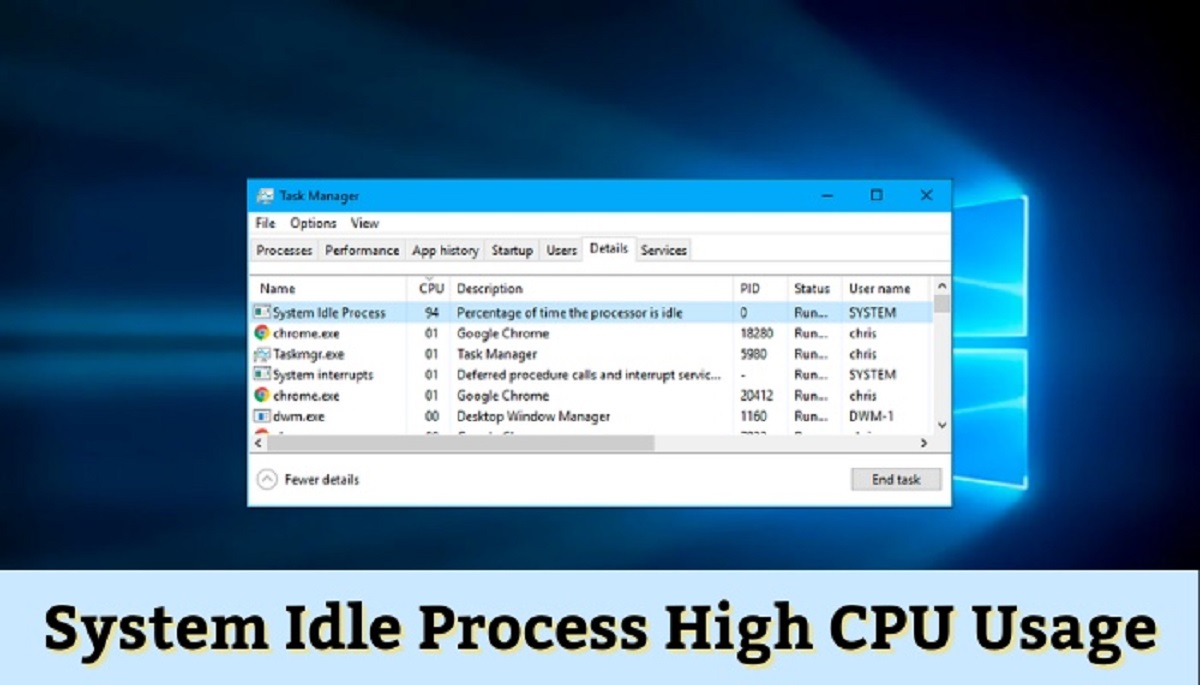Introduction
Welcome to the world of crypto mining malware, a growing threat that has increasingly caught the attention of both individuals and organizations. In recent years, the popularity and value of cryptocurrencies have skyrocketed, making them an attractive target for cybercriminals. While there are legitimate ways to mine cryptocurrencies, malicious actors have devised cunning techniques to exploit unsuspecting users’ computing power for their own financial gain.
Crypto mining malware, also known as cryptojacking, has become a significant concern for computer users worldwide. This type of malware stealthily infiltrates systems, using the resources of the infected machine to mine cryptocurrencies without the user’s consent. The impact of crypto mining malware can be severe, resulting in slow and sluggish performance, increased electricity consumption, and even potential damage to hardware components.
The primary target of crypto mining malware is personal computers, but it can also infect servers, smartphones, and Internet of Things (IoT) devices. Its ability to go undetected makes it particularly dangerous, as victims may remain unaware of the malware’s presence for extended periods. Detecting and eradicating crypto mining malware is crucial to safeguarding your devices and protecting your privacy and resources.
In this article, we will explore the world of crypto mining malware and discuss the various signs and techniques to detect its presence on different operating systems. Additionally, we will highlight some essential tools and strategies you can employ to prevent falling victim to this evolving threat. By staying informed and vigilant, you can minimize the risk and potential damage caused by crypto mining malware.
What is Crypto Mining Malware?
Crypto mining malware, also known as cryptojacking, refers to malicious software that covertly uses the computing resources of an infected device to mine cryptocurrencies. Unlike traditional malware that aims to steal personal information or disrupt computer systems, crypto mining malware exploits the computational power of an infected machine to generate cryptocurrency without the user’s knowledge or consent.
The concept of cryptocurrency mining involves solving complex mathematical problems that validate and secure transactions on a blockchain network. By dedicating computational power and energy to this process, miners are rewarded with newly minted cryptocurrency tokens. However, crypto mining requires substantial computing resources and consumes a significant amount of electricity.
Malicious actors have recognized the potential profitability of crypto mining and have developed sophisticated techniques to exploit vulnerable systems. Crypto mining malware infects computers through various means, such as malicious email attachments, compromised websites, or vulnerable software installations. Once inside, the malware discreetly harnesses the infected device’s processing power to perform cryptocurrency mining operations on behalf of the attacker.
One reason why crypto mining malware is particularly concerning is its ability to remain hidden and undetected. Unlike other malware that may exhibit noticeable symptoms, such as pop-ups or system crashes, crypto mining malware operates silently in the background. As a result, victims may only notice the effects of the malware, such as decreased performance or increased electricity bills, without realizing the underlying cause.
The proliferation of crypto mining malware has been fueled by the rising popularity and value of cryptocurrencies. As the value of cryptocurrencies like Bitcoin and Ethereum continues to surge, cybercriminals are incentivized to exploit the computing power of unsuspecting users to mine these valuable digital assets. The ease of spreading malware and the potential profitability make crypto mining an attractive avenue for cybercriminals.
It is essential to understand the risks associated with crypto mining malware and take proactive measures to detect and prevent its presence on our devices. In the following sections, we will explore how crypto mining malware works and discuss the common signs that can help identify its presence on different operating systems.
How does Crypto Mining Malware work?
Crypto mining malware, also known as cryptojacking, operates by infecting a device and utilizing its resources to mine cryptocurrencies. Understanding how this malware works is crucial in order to effectively detect and counter its presence.
Once a device is infected with crypto mining malware, the malware establishes a connection with a mining pool or a command and control (C&C) server controlled by the attacker. The malware then downloads a crypto mining script or software onto the infected device.
The crypto mining script or software is designed to use the device’s processor (CPU) or graphics processor (GPU) to perform the complex mathematical calculations required for cryptocurrency mining. By harnessing the computing power of multiple infected devices, the attacker can significantly increase their mining capabilities without any additional costs.
Crypto mining malware often employs stealthy techniques to evade detection. For instance, it may throttle the usage of system resources to avoid impacting the device’s performance noticeably. By using a fraction of the available resources, the malware can operate discreetly, reducing the chances of detection by the user.
In some cases, crypto mining malware may also employ obfuscation techniques to hide its presence from security software. This can include utilizing code obfuscation or encryption methods to make it more difficult for antivirus programs to identify and eliminate the malware.
Additonally, some variants of crypto mining malware exploit vulnerabilities in web browsers or commonly used software to infect devices. This method, known as “drive-by mining,” allows the malware to infect users simply by visiting a compromised website or clicking on a malicious link.
Another technique used by crypto mining malware is “malvertising,” where legitimate online advertisements are modified to contain malicious code. When users click on these ads or visit websites hosting them, their devices can become infected with the malware.
Beyond traditional PCs, crypto mining malware has also targeted mobile devices and Internet of Things (IoT) devices. The proliferation of connected devices has provided cybercriminals with new avenues to exploit the computational power of these devices for mining cryptocurrencies.
As the popularity of cryptocurrencies continues to rise, crypto mining malware remains a prevalent threat. To effectively combat this malware, it is crucial to understand the signs that indicate its presence on different operating systems. In the next section, we will explore these signs and discuss how to detect crypto mining malware on Windows.
Signs of Crypto Mining Malware
Detecting the presence of crypto mining malware is vital in order to protect your device and prevent unauthorized use of your computing resources. While this type of malware can be adept at remaining hidden, there are several signs that may indicate its presence.
1. Slow or sluggish performance: One of the most common signs of crypto mining malware is a noticeable slowdown in your device’s performance. The malware consumes system resources, causing other applications and processes to become slow or unresponsive.
2. High CPU or GPU usage: Crypto mining malware utilizes your device’s processing power to perform cryptocurrency mining operations. As a result, you may notice unusually high CPU or GPU usage even when you’re not running resource-intensive tasks.
3. Increased electricity consumption: Cryptocurrency mining requires a significant amount of computational power, which translates to increased electricity consumption. If you notice a sudden spike in your energy bills without any obvious explanation, it could be a sign of crypto mining malware.
4. Overheating and loud fan noise: Crypto mining malware puts a strain on your device’s hardware, causing it to generate more heat. This can result in overheating, which may trigger your device’s cooling system to work harder, leading to louder fan noise.
5. Unusual network activity: Crypto mining malware communicates with external servers to receive mining instructions and transmit the mined cryptocurrencies. Monitoring your network activity can help identify any unusual or suspicious connections.
6. Increased data usage: Crypto mining malware continuously generates and transmits data as it mines cryptocurrencies. If you notice an unexpected increase in data usage, it may be a sign of malicious activity.
7. Battery drain on mobile devices: Crypto mining malware can also target mobile devices, causing excessive battery drain. If your smartphone or tablet’s battery life suddenly decreases significantly, it may be worth investigating for the presence of malware.
8. Unwanted browser behavior: Some crypto mining malware infects web browsers, causing unusual behavior such as frequent crashes, redirects to suspicious websites, or unauthorized changes to browser settings.
It is important to note that these signs may not conclusively indicate the presence of crypto mining malware, as other factors could be responsible for these symptoms. However, if you notice multiple signs occurring simultaneously, it increases the likelihood of malware infection.
In the next sections, we will explore how to detect crypto mining malware on different operating systems, including Windows, macOS, and Linux.
Detecting Crypto Mining Malware on Windows
Windows-based systems are prime targets for crypto mining malware due to their widespread use. Detecting the presence of crypto mining malware on Windows requires a combination of manual checks and the use of specialized tools.
Here are some steps you can take to detect crypto mining malware on a Windows system:
1. Monitor system performance: Keep an eye on your computer’s performance, including CPU and GPU usage. If you notice consistently high usage even when the system is idle, it could be a sign of crypto mining malware.
2. Check running processes: Use the Windows Task Manager or a third-party process monitoring tool to review the list of running processes. Look for any unfamiliar or suspicious processes that are consuming a significant amount of CPU resources.
3. Review startup programs: Crypto mining malware often sets itself to run automatically on system startup. Check the list of programs that launch at startup and disable any unfamiliar or suspicious entries.
4. Scan for malware: Use reputable antivirus or anti-malware software to scan your system for any malicious programs, including crypto mining malware. Ensure that your antivirus software is up to date and capable of detecting new and emerging threats.
5. Check system logs: Inspect Windows Event logs for any unusual or suspicious activities. Look for patterns of activity related to crypto mining malware or any other indications of unauthorized mining operations.
6. Use specialized detection tools: Several dedicated tools can help detect and remove crypto mining malware on Windows. Examples include Malwarebytes, AdwCleaner, and RogueKiller. These tools can identify and eliminate known crypto mining malware variants.
7. Keep software updated: Regularly update your operating system, antivirus software, web browsers, and other applications to ensure they are equipped with the latest security patches. This helps protect against vulnerabilities that malware can exploit.
8. Employ browser extensions: Install browser extensions that can block crypto mining scripts from running on websites. Examples include NoCoin and MinerBlock, which prevent websites from utilizing your computer’s resources for mining without your consent.
Remember to exercise caution when downloading and installing software from the internet. Stick to reputable sources and avoid clicking on suspicious links or downloading files from unknown sources. Additionally, practice good cybersecurity hygiene by regularly backing up your files and being cautious of phishing attempts.
By following these steps and implementing preventive measures, you can effectively detect and mitigate the risks associated with crypto mining malware on Windows-based systems.
Detecting Crypto Mining Malware on macOS
While macOS is generally considered to be less prone to malware compared to Windows, it is not immune to crypto mining malware. Detecting the presence of crypto mining malware on macOS requires a combination of manual checks and the use of specialized tools.
Here are some steps you can take to detect crypto mining malware on a macOS system:
1. Monitor system performance: Keep an eye on your computer’s performance, including CPU and energy usage. If you notice unusually high resource consumption when your system is idle or performing light tasks, it could be an indication of crypto mining malware.
2. Check activity monitor: Use the macOS Activity Monitor (located in the Utilities folder) to review the list of currently running processes. Look for any unfamiliar or suspicious processes that are consuming excessive CPU resources.
3. Check startup programs: Review the list of programs that launch at startup. Open the “Users & Groups” system preference, select your user account, and navigate to the “Login Items” tab. Disable any unfamiliar or suspicious entries.
4. Scan for malware: Use reputable antivirus or anti-malware software specifically designed for macOS to scan your system for any malicious programs, including crypto mining malware. Ensure that your antivirus software is up to date and capable of detecting the latest threats.
5. Review browser extensions: Check your web browser’s extensions and remove any unfamiliar or suspicious ones. Some crypto mining malware may install browser extensions to facilitate mining operations.
6. Use specialized detection tools: Several dedicated tools can help detect and remove crypto mining malware on macOS. Examples include Malwarebytes for Mac, Avast, and Bitdefender. These tools can identify and eliminate known crypto mining malware variants.
7. Keep software updated: Regularly update your macOS operating system, antivirus software, web browsers, and other applications to ensure they are equipped with the latest security patches. This helps protect against vulnerabilities that malware can exploit.
8. Employ browser extensions: Install browser extensions or plugins that can block crypto mining scripts from running on websites. Examples include NoScript, MinerBlock, and uBlock Origin. These extensions prevent websites from utilizing your computer’s resources for mining without your consent.
It is important to exercise caution when downloading and installing software from untrusted sources. Stick to reputable app stores and official software websites. Be wary of suspicious links and email attachments, as they can often be a source of malware infections.
By following these steps and implementing preventive measures, you can effectively detect and mitigate the risks associated with crypto mining malware on macOS-based systems.
Detecting Crypto Mining Malware on Linux
Linux systems, known for their robust security measures, are not immune to the threat of crypto mining malware. Detecting the presence of crypto mining malware on Linux requires a combination of manual checks and the use of specialized tools.
Here are some steps you can take to detect crypto mining malware on a Linux system:
1. Monitor system performance: Keep an eye on your system’s performance, including CPU and memory usage. If you notice consistently high usage even when the system is idle, it could be a sign of crypto mining malware.
2. Check system processes: Use the System Monitor or top command to review the list of running processes. Look for any unfamiliar or suspicious processes that are consuming a significant amount of CPU resources.
3. Review startup services: Check the list of services that start on boot. Use the systemctl command or a system management tool specific to your Linux distribution to disable any unfamiliar or suspicious services.
4. Scan for malware: Although malware targeting Linux systems is less common, it is still advisable to use reputable antivirus or anti-malware software. Tools such as ClamAV and Sophos Antivirus for Linux can help detect known crypto mining malware.
5. Inspect system logs: Analyze system logs, such as the /var/log/syslog file, for any unusual or suspicious activity. Look for repeated system error messages, unexplained network connections, or other anomalies that may indicate the presence of crypto mining malware.
6. Use specialized detection tools: Several specialized tools can help detect and remove crypto mining malware on Linux. Examples include rkhunter, chkrootkit, and Lynis. These tools can help identify known malware variants and anomalous system behavior.
7. Keep software updated: Regularly update your Linux distribution, including the kernel, system libraries, and installed applications. Keeping your system up to date ensures that you have the latest security patches and protections against vulnerabilities.
8. Employ network monitoring: Monitor network traffic using tools like Wireshark or tcpdump to identify any suspicious or unexpected connections to external servers. Anomalies in network traffic can indicate crypto mining malware attempting to communicate with command and control servers.
9. Harden system security: Implement security best practices for your Linux system, such as restricting unnecessary user privileges, enabling a firewall, and using strong passwords. This can minimize the likelihood of successful malware infections.
Remember to exercise caution when downloading and installing software from untrusted sources and only use trusted repositories. Regularly backup your important data to avoid data loss in case of a crypto mining malware infection.
By following these steps and employing preventative measures, you can effectively detect and mitigate the risks associated with crypto mining malware on Linux-based systems.
Tools for Detecting Crypto Mining Malware
Detecting crypto mining malware can be challenging due to its ability to remain hidden and evade traditional security measures. However, several specialized tools are available to help identify and remove this type of malware. These tools employ various techniques to detect the presence of crypto mining malware on different operating systems.
Here are some widely used tools for detecting crypto mining malware:
1. Malwarebytes: Malwarebytes is a reputable antivirus and anti-malware software that offers cross-platform support, making it compatible with Windows, macOS, and Linux. It uses advanced scanning techniques to detect and remove crypto mining malware, including both known variants and emerging threats.
2. AdwCleaner: AdwCleaner is a lightweight tool specifically designed to detect and remove potentially unwanted programs (PUPs), browser hijackers, and adware. It can also detect and eliminate crypto mining malware that may have entered your system through web browsers or other software.
3. RogueKiller: RogueKiller is an anti-malware tool that specializes in detecting and removing advanced threats, including crypto mining malware. It scans your system’s processes, registry, and other areas to identify and eliminate malicious programs that may be using your computer’s resources for mining purposes.
4. rkhunter: rkhunter (Rootkit Hunter) is a widely used open-source security scanner for Linux systems. It performs a comprehensive scan for rootkits, backdoors, and other malware that may be present on your system. Although primarily focused on rootkit detection, rkhunter can also identify crypto mining malware as part of its scan.
5. Lynis: Lynis is a powerful and customizable security auditing tool for Linux systems. It helps identify security vulnerabilities and misconfigurations that can be exploited by crypto mining malware and other threats. By running Lynis regularly, you can detect potential weaknesses and take appropriate remedial actions.
6. ClamAV: ClamAV is an open-source antivirus engine that offers multi-platform support, including Windows, macOS, and Linux. It provides real-time detection and scanning capabilities to identify and remove a wide range of malware, including crypto mining malware.
7. Sophos Antivirus for Linux: Sophos Antivirus is a popular commercial solution that offers robust protection against various forms of malware, including crypto mining malware. It provides real-time scanning, quarantine capabilities, and frequent updates to ensure the latest detections for emerging threats.
These tools are just a few examples of the many options available for detecting and removing crypto mining malware. It is essential to keep these tools updated with the latest signature databases and to run regular scans on your systems to ensure optimal protection.
However, it is important to note that no single tool can provide 100% protection against all forms of malware. Therefore, it is crucial to adopt a multi-layered security approach that includes keeping your operating system and applications up to date, practicing safe browsing habits, and employing strong security measures.
By utilizing these tools and implementing proper security practices, you can enhance your ability to detect and mitigate the risks posed by crypto mining malware.
Preventing Crypto Mining Malware
Preventing crypto mining malware is essential to protect your devices, preserve system performance, and safeguard your personal information. By implementing the following preventive measures, you can significantly reduce the risk of falling victim to this type of malware:
1. Use reputable security software: Install and regularly update reputable antivirus or anti-malware software on all devices, including PCs, Macs, and mobile devices. Ensure that the software can detect and block crypto mining malware, and enable real-time scanning for ongoing protection.
2. Be cautious of downloads and email attachments: Exercise caution when downloading files from the internet or opening email attachments, especially if they are from unknown or untrusted sources. Always scan downloads and attachments with antivirus software before opening them to mitigate the risk of malware infections.
3. Keep your operating system and software up to date: Regularly update your operating system, web browsers, plugins, and other software to the latest versions. Software updates often include security patches that address vulnerabilities that malware can exploit to infect your system.
4. Practice safe browsing habits: Be cautious when visiting websites and interacting with online ads. Some malicious actors use malvertising techniques to spread crypto mining malware. Avoid clicking on suspicious advertisements or downloading software from untrusted sources.
5. Utilize browser extensions: Install browser extensions that can block crypto mining scripts from running on websites. These extensions, such as NoCoin and MinerBlock, prevent websites from utilizing your computer’s resources for mining without your consent.
6. Disable JavaScript in web browsers: Consider disabling JavaScript in your web browser settings or using browser extensions that can selectively block JavaScript execution on websites. Crypto mining malware often deploys JavaScript-based scripts to carry out their mining operations.
7. Verify software authenticity: Only download software from official sources or trustworthy websites. Verify the authenticity and integrity of the software before installation, as some malware may be disguised as legitimate applications.
8. Apply network security measures: Use firewalls, intrusion detection systems (IDS), and virtual private networks (VPNs) to enhance network security. These measures can help detect and block unauthorized connections to command and control servers associated with crypto mining malware.
9. Educate yourself and your team: Stay informed about the latest threats and practices in cybersecurity. Educate yourself, your family members, and employees about the risks of crypto mining malware and the preventive measures to take.
10. Regularly backup your data: Implement a regular backup routine to protect your important files and data. In the event of a crypto mining malware infection or any other form of cyber-attack, having a backup will allow you to restore your data without significant loss.
By implementing these preventive measures, you can significantly reduce the risk of crypto mining malware infecting your devices and protect your computing resources and personal information.
Conclusion
Crypto mining malware poses a significant threat to computer users worldwide, hijacking their computing resources to mine cryptocurrencies without their knowledge or consent. Understanding the nature of this malware and knowing how to detect and prevent its presence is crucial in maintaining the security and performance of our devices.
In this article, we have explored what crypto mining malware is and how it operates. We have discussed the common signs of its presence, such as slow performance, high CPU or GPU usage, increased electricity consumption, and unusual network activity. Additionally, we have provided guidelines for detecting crypto mining malware on different operating systems, including Windows, macOS, and Linux.
We have also discussed specialized tools available for detecting this malware, such as Malwarebytes, AdwCleaner, rkhunter, and Sophos Antivirus. These tools, along with regular system monitoring and periodic scanning, can help identify and remove crypto mining malware from our devices.
Preventing crypto mining malware requires a multi-faceted approach. It involves using reputable antivirus software, exercising caution when downloading files and opening email attachments, keeping operating systems and software up to date, practicing safe browsing habits, and utilizing browser extensions to block crypto mining scripts.
By implementing these preventive measures, we can significantly reduce the risk of falling victim to crypto mining malware and protect our devices, personal information, and resources. It is essential to remain vigilant, stay informed about emerging threats, and continually adapt our security practices to defend against this evolving threat landscape.
Remember, the battle against crypto mining malware requires ongoing efforts and a combination of proactive measures. By adopting a proactive and security-conscious mindset, we can minimize the impact of crypto mining malware and ensure a safer and more secure digital environment for ourselves and our devices.

























